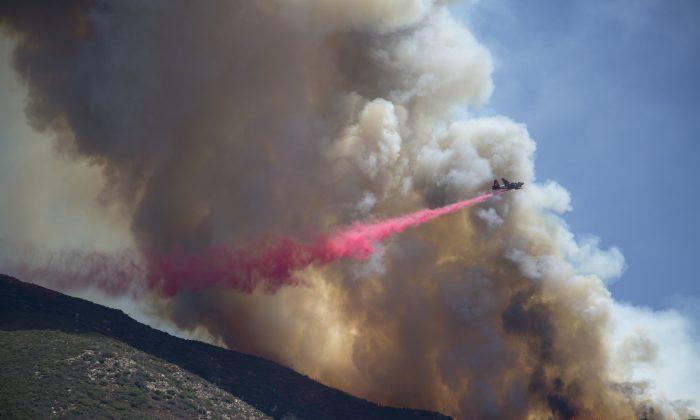SAN FRANCISCO—The carcasses of salmon, trout and more than a dozen other newly extinct native species lie in dry streambeds around California.
Exhausted firefighters in the Sierra Nevada battle some of the biggest wildfires they’ve ever seen. And in Central Valley farm towns, more and more parents hear the squeal of empty pipes when they turn on water taps to cook dinner.
A new report by the Public Policy Institute of California nonprofit think-tank paints that distressing picture of California for the next two years if the state’s driest four years on record stretches further into the future.
Written by water and watershed experts working at the policy center, at the University of California, Davis, and elsewhere, the report urges California to do more now to deal with what researchers project to be the biggest drought crises of 2016 and 2017 — crashing wildlife populations, raging wildfires and more and more poor rural communities running out of water entirely.
A separate study published Thursday in the journal of the American Geophysical Union warns that climate change is making drought the new normal in California.
For California’s environment, officials should be thinking more strategically about how best to use what water is left for wildlife, and preparing “conservation hatcheries” to safeguard native fish species that are on the verge of extinction in the wild, it said.
Hanak also called wildfires a tremendous risk as overgrown forests dry in the drought. Fire and forest agencies already are working to reduce the overgrowth that contributes to making those fires bigger and harder to control, researchers said.
After the environment, rural communities have been hardest-hit by the drought, the study said. As of last month, more than 2,000 domestic wells were reported to have gone dry, mostly in the Central Valley and Sierra Nevada. More than 100 small public-water systems around the state have been cited as needing emergency water supplies.
State and federal efforts to help those communities have been increasing but remain stop-gap, the study concluded. It urges the state to do more to track areas in need of help and come up with longer-term water supplies to replace wells that have likely gone dry for good.
The study advises against counting on El Nino, a sporadic weather pattern that can bring strong storms, to break the drought. State water officials similarly have tried to temper public hopes for a wet El Nino year.
El Nino is historically associated with wetter winters in California only half the time, and climate change makes that even more uncertain, the state Department of Water Resources has said.





